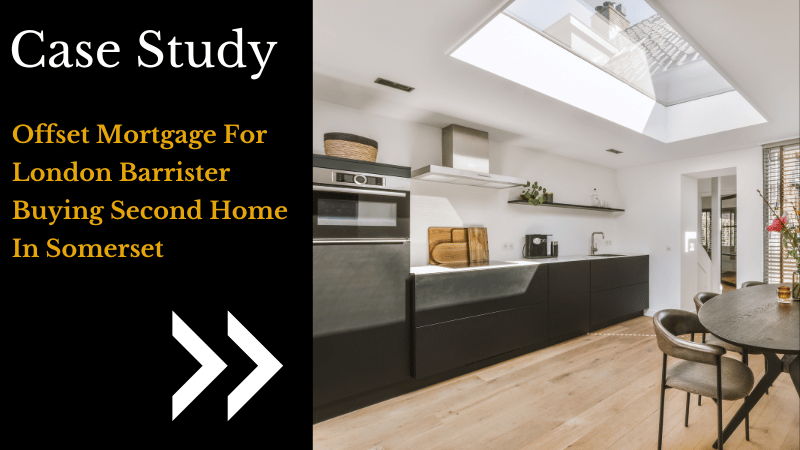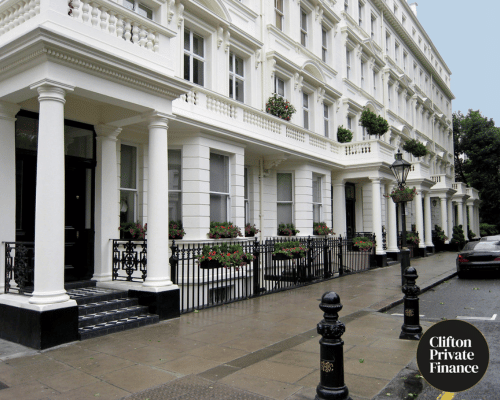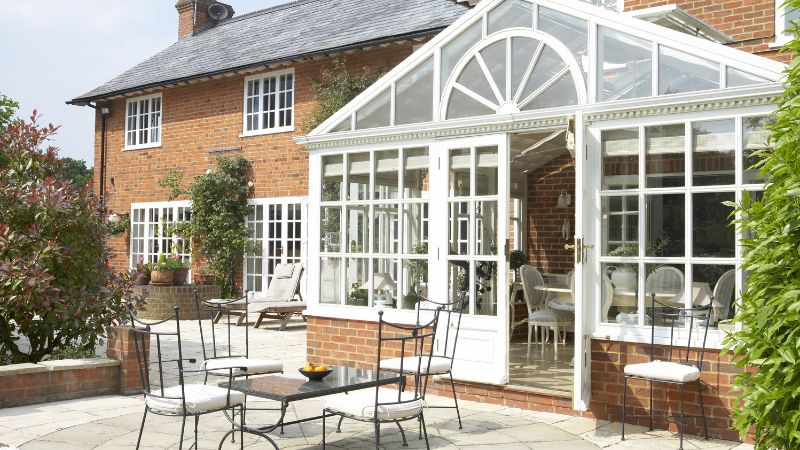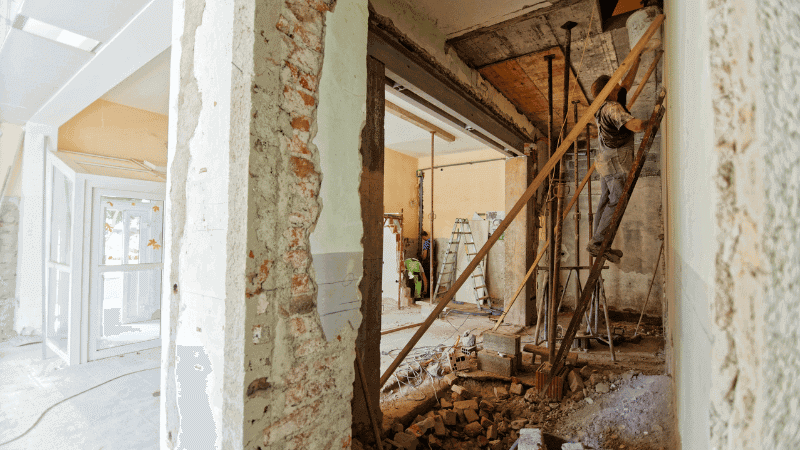Categories
3 Types of Second Home Tax and How to Plan For Them

The UK property market has long been a complicated investment landscape, with the likelihood of significant gains based on a strong history of property value increases, as well as a strong rental and holiday let potential. However, as the UK government seeks to address the housing crisis, taxation is used to discourage second home ownership and free up properties for resident ownership.
Using the three key taxes of council tax, stamp duty land tax (SDLT), and capital gains tax (CGT), national and regional powers are putting additional pressure on second home owners. At Clifton Private Finance, we believe that understanding these tax obligations is essential for anyone looking to buy second properties across the UK. With an ‘eyes open’ approach to second home ownership, it is possible to properly budget for property investment. Plus, while the taxes cannot (and should not) be avoided, working with Clifton Private Finance puts you in the best possible position to obtain lower mortgage rates and better terms that offset these second home taxes and ensure your investment is still very much worthwhile.
We can work closely with your tax advisers to find the best structure for your second home ownership in the UK, while also rolling your stamp duty tax into the value of your mortgage, for example, to minimise upfront costs.
Second Home Tax 1 - Council Tax
The use of council tax to discourage second home ownership, especially for investors seeking to obtain properties in seasonal areas as holiday lets, has grown in momentum in recent years.
The level of council tax premium for second homes is determined by local councils, making research into each specific location essential to properly evaluate the cost.
Council Tax in England
From April 2025, all local councils in England can apply a premium of up to 100% on second homes. This effectively doubles the standard council tax bill for those councils wishing to apply it. Regions such as Cornwall and Cumberland (the location of the popular Lake District) have been quick to use these new taxation powers to offset their ongoing problem with rising property prices that put home ownership out of the reach of many first time buyers and local families.
Council Tax in Scotland
Scottish councils have had the power to as much as double council tax on second home properties since April 2024. Though optional and at the discretion of each individual council, the majority of councils across the country have opted to apply the full 100% premium, making the second home tax relevant in major cities such as Edinburgh and Glasgow as much as it is in scenic rural areas that cite holiday homes as a key problem to be addressed.
Council Tax in Wales
Of all the UK countries, it is in Wales where the greatest impact of second home council tax premiums have come into affect. Councils in the country have the right to add as much as 300% to council tax for second homes. Regions that applied extremely high levels of taxation, such as Pembrokeshire (including popular holiday destinations such as Tenby) and Gwynedd, home of the mountain Yr Wyddfa (formerly known as Snowdon), faced extreme backlash resulting in an eventual lowering of the second home tax.
As of April 2025, no Welsh council has pushed to apply the full 300% premium, though second home council tax penalties are in place across the country. Cardiff aligns with the UK standard by applying a 100% premium on second homes, while Wrexham is looking to lead the charge on empty second homes with a 200% premium that pushes to 250% if the property remains unoccupied for four years.
Domestic Rates in Northern Ireland
In Northern Ireland, the council tax system is replaced with domestic rates. This alternative system has no penalty for a second home, making the country an exception to this particular second home tax, potentially encouraging greater property investment.
Does the Council Tax Premium Work?
The second home tax applied through council tax premiums has been controversial, with many pushbacks from those in the rental sector. It is still relatively young but it can be seen that it is working to encourage a drop in market value for affected properties, with the number of available homes in Pembrokeshire trebling in the space of a year after the introduction of the premium.
Whether this trend will be replicated across the whole of the UK, or if the council tax premiums merely represent another boost of income for cash-strapped councils without greatly affecting property prices remains to be seen.
Mitigating the Council Tax Burden
Methods exist to reduce or otherwise remove the second home council tax, with sensible planning able to offset the level of taxation. These include structuring your second home such that it qualifies for business rates by being let out as a holiday rental for at least 140 days per year (in England, other regions vary); and though changing the official owner on the deed to a family member (often an adult child).
Our specialist taxation advisors and property management advisors at Clifton Private Finance can help you compare various options to better structure your second home rental properties to limit increasing council tax premiums. Speak to us today to learn how we can help.
Second Home Tax 2 - Stamp Duty
Stamp Duty Land Tax (SLDT) and its regional variants represents a core tax that is paid when buying a property. In England and Northern Ireland, SDLT applies, while Wales uses Land Transaction Tax (LTT), and Scotland Land and Buildings Transaction Tax (LBTT).
In all three cases, the tax is increased when buying a second home. It is an upfront tax that is paid when you purchase the property and is often folded into your mortgage. For this reason, making sure you get the very best mortgage rates is a key factor in lowering the amount of total stamp duty you pay. Working with Clifton Private Finance means access to the wider marketplace of UK mortgage lenders, offering tailored rates that will greatly lower your monthly mortgage repayment and the interest accrued over the years.
The second property surcharges for the different property transaction taxes are as follows:
- SDLT (England and Northern Ireland) - a 5% premium on second homes.
- LTT (Wales) - a higher rate for second homes that starts at 6%.
- LBTT (Scotland) - an additional dwelling supplement of 6%.
As an example, consider the difference between purchasing a £295,000 property in England in different circumstances:
SDLT on £295,000 Home in England
|
|
First Time Buyer |
Primary Residence |
Second Home |
|
First band (up to £125,000) |
0% : £0 |
0% : £0 |
5% : £6,250 |
|
Second band (£125,001 to £250,000) |
0% : £0 |
2% : £2,500 |
7% : £8,750 |
|
Top band (£251,000 upwards) |
0% : £0 |
5% : £2,250 |
10% : £4,500 |
|
Total SDLT |
£0 |
£4,750 |
£19,500 |
This upfront second home tax is a considerable expense for anyone looking to purchase a second property and represents a major consideration when investing in the UK property market.
Second Home Tax 3 - Capital Gains Tax
The third second property tax used by the government to generate income on the UK property market is that of Capital Gains Tax (CGT). CGT is applied on any profit made from selling your property, and in some ways can be considered a mirror to the SDLT paid on purchase.
It is useful to understand that CGT is based on the profit you make when selling your property and can be offset through expenses incurred investing in the property in the period between buying and selling you home. For example, if you added an extension to the property or upgraded the central heating system, these costs will lower the profit you made and adjust the CGT accordingly. Speaking to a Clifton Private Finance advisor will help you understand these legitimate tax adjustments that will mean you get the most from your investment.
CGT has a £3,000 per year personal allowance, after which it is applied at different rates based on your income tax bracket:
- 18% for basic-rate taxpayers
- 24% for higher-rate taxpayer
It is important to bear in mind that the sale of the property will count as income and thus may itself push you into a higher tax bracket.
CGT Example
Simon and Julia bought their second home for rental in 2005 for £155,000. In 2009, they converted the loft at a cost of £25,000. In 2014, they undertook some major renovations of which £10,000 of costs were considered investing into the property. They put the property on the market in 2025 for £280,000 and end up accepting an offer of £277,500.
The profit they made is calculated as:
- £277,500 (sale price) less:
- £155,000 (purchase price)
- £25,000 (loft conversion)
- £10,000 (renovation investment)
Total profit: £87,500
Simon and Julia are equal property owners and have made £43,750 profit each. After their £3,000 personal allowances, they must pay tax based on £40,750 each. Simon is a higher band tax payer, while Julia earns only £20,000 p.a.
Mitigating CGT
There are many ways to reduce capital gains tax through careful planning and financial structuring. A Clifton Private Finance advisor could help. If you are looking to sell your second property and would like to consider a favourable structure with CGT in mind, contact us today.
Minimising the Impact of Second Home Tax with Clifton Private Finance
Taxation is one of the certainties of life, but experienced advice and sensible investment structuring can go a long way to minimising its impact. At Clifton Private Finance, our dedicated mortgage team and property finance experts can work with your tax advisers to structure your UK property investment to lower the total tax paid at every stage.
Of equal importance is ensuring that your property funding is optimised to avoid unnecessary fees and substandard interest rates. At Clifton Private Finance, our mortgage advisors have long-term established relationships with the finest UK mortgage lenders, giving you access to superior loans with premium rates and flexible loan terms. Working in partnership, we can ensure that your second property purchase and all relevant funding is positioned to perform as a top-tier investment.
To make the most from the thriving UK property market without being hit too hard from second home taxes, speak to Clifton Private Finance today.










